
‘How can a director invent the female action heroine, change Hollywood’s attitude to race, launch the career of a future Oscar winner and yet still remain anonymous? These are questions that have troubled fans of exploitation genius Jack Hill for years. Pick up a copy of Halliwell’s highly-regarded Who’s Who In The Movies and you will not find an entry for the filmmaker, yet his debut offering, 1968’s Spider Baby, has recently been turned into a musical and is also lined up for a remake, while at the same time Halle Berry continues to express interest in updating his blaxploitation classic Foxy Brown. Recent retrospectives of Hill’s work in Belgium, France and Los Angeles, and a fanbase that includes Hollywood luminaries such as Quentin Tarantino and Joe Dante, would indicate that he is a man who is about to be appreciated by a wider audience. Having retired from the motion picture industry in 1982, the low budget maestro Tarantino once called “one of America’s greatest living directors” has found his acclaim, and recognition, slow in coming…
‘Born in 1933, Jack Hill studied filmmaking at UCLA alongside his close friend Francis Ford Coppola and the two even worked on each other’s student features. Interestingly, Hill’s effort – dubbed The Host – would end up being recycled by Coppola as the third and final act in the iconic Apocalypse Now (1979).
‘“A guy called Steve Burum was my cameraman on The Host and he also did the second unit work on Apocalypse Now,” says Hill. “He told me that he and Coppola were out in the Philippines joking about how they were doing Jack Hill’s student film.” Indeed, Tarantino was so impressed by The Host that he paid to have it finished, re-mastered and released to the general public (it was finally included on the DVD of Hill’s 1975 girl-gang epic Switchblade Sisters). However, just as Hill would inspire Coppola, it was the future Godfather director that got his classmate his first big break. When the young Coppola was hired by Roger Corman, he took Hill along with him – and the two would work together on outings such as 1962’s 3D sex romp The Bellboy and the Playgirls and 1963’s tawdry terror opus Dementia 13. However, when he was finally let loose to make his own productions, Hill would discover new talent and instigate new trends at the box office. For example, his 1967 film Pit Stop, which is set in the competitive world of figure-eight racing, gave Ellen Burstyn her first leading lady role – allowing her to catch the eye of Peter Bogdanovich, who would break her into the big time with The Last Picture Show (1971).
‘“Peter was at the premiere of Pit Stop because I personally invited him,” explains Hill. “That was how he discovered Ellen. I was happy with Pit Stop but I did not really want to do a movie about car racing. I was just handed assignments and did the best that I could with them.” Certainly, as a journeyman director it was always Hill’s intention to try and subvert the material that he was given.
‘“I had the freedom to improvise,” he says. “I feel quite fortunate that I worked in the low-budget sector because it meant I did not have to deal with committees who wanted to impose their ideas and prejudices on my material. I had a free hand – much more so than I would have had if I was working for the studios. As long as you put the elements in there that producers like Corman knew they could sell, such as sex and violence, you could raise the picture a little bit higher than they expected and give the audience something intelligent to chew on.”
‘It was Hill’s discovery of Pam Grier – who was cast in The Big Doll House (1971) – that really cemented his place in history. Aside from the fact that The Big Doll House would kick-start the decade-long interest in shamelessly sexy “women-in-prison” pictures, it also gave the statuesque Grier an imposing and intense supporting role – one in which she easily overshadowed everyone else onscreen. “Pam’s part was not written for a black actress,” says Hill. “I just wanted to find an ensemble that worked well and I remember how Pam walked into the audition. Even though she had never done anything before, she impressed me with her personality and authority. Of course, she was also a great-looking woman and had all of this enthusiasm. She worked very hard – she was thoroughly professional and was totally dedicated to her craft.”
‘Hill began to write parts specifically for Grier (they did four films together in total, most famously the brutal action opus Coffy (1973)) and in doing so the director launched the first international black sex symbol. Grier represented a new breed of heroine – tough, resourceful and politically aware (in 1972’s The Big Bird Cage she plays a Marxist revolutionary), the actress paved the way for cinematic females who made their male counterparts look like big girl’s blouses. The fact that it was a black woman acting in this manner made it all the more mind-blowing for 70s audiences.
‘“Back then there was still a lot of discrimination,” laments Hill. “I remember when I began working on Coffy, I made a real effort to find black technicians. There were not many of them because it was a union film and there were not a lot of black people in the union. But we found a guy called Bob Minor – we gave him an acting part in the movie and he also did the stunt work. He learned on the job and eventually became one of the best in the business. Now he works as the stunt coordinator on blockbusters such as Charlie’s Angels and National Treasure. We also hired a black assistant director on Coffy. We made a major effort to get black people into the union and give them work.”
‘What was so outstanding about the thrillers that Grier and Hill embarked on together was that the they were giving the audience a femme fatale they could relate to – long before Sigourney Weaver in Alien or Jodie Foster in The Silence of The Lambs. To all intents and purposes, the rampaging nurse who Grier plays in Coffy was nothing more than an ordinary, white-collar worker driven to destruction after some local drug dealers kill her sister (it is also worth noting that Coffy predates the similar, city-based vigilante-action of Death Wish and Taxi Driver). “The remarkable thing about Coffy was that it pulled in a crossover audience,” says Hill. “It was very, very popular and it attracted a large white audience. Pam Grier represented the idea of black power. That was quite subversive back then. With Coffy I wanted to create a character that used her wits to get out of dangerous situations – she had to be someone that the average woman in the audience could relate to. And when you saw a black audience standing up on their seats and cheering at the screen it created a great feeling. I could never have predicted that sort of reaction.”
‘He may have changed the way that Hollywood perceived women (typically relegated to the role of passive sex symbols prior to Coffy) but Hill still wasn’t granted access to the A-list. “The general feeling was that these were just ‘black’ pictures,” sighs the director. “It didn’t matter to the studios that Coffy had reached number one at the box office. To them it was designed for black people to enjoy and some of the majors had quite a racist attitude towards these movies. I remember being told, ‘You might have had a big hit but it was with a black picture, so it does not really count.’” As a result, the filmmaker moved on to make 1974’s college sex comedy The Swinging Cheerleaders – predating the likes of Porky’s and American Pie and opening up the market in teen-orientated, coming-of-age satires. However, it would take years before Hill was considered a forward-thinking trailblazer.
‘“Jack Hill is the greatest,” enthused Quentin Tarantino back in 1995. “Pam Grier was Marlene Dietrich to his Josef von Sternberg. I think that Hill is a really terrific director. His scripts are very funny, he is a really talented man and I am a big fan of his work. He was the Howard Hawks of exploitation filmmaking.”
‘The man himself is just happy that – nearly three decades since he last stood behind a camera – a new generation is finally seeing how important his work was. “I always wanted people to feel positive at the end of my films,” he enthuses. “I was always careful to try and juxtapose humour with the violence and tragedy. I think I accomplished that, and perhaps that is why a generation or two later my films are still popular and in-demand while many of the mainstream movies I was up against at the time and, truth be known, I was quite envious of, are now forgotten.”’ — Callum Waddell
___
Stills
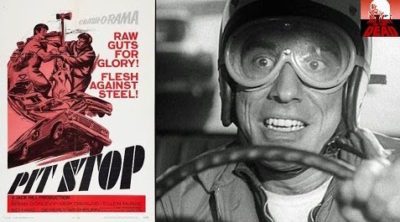
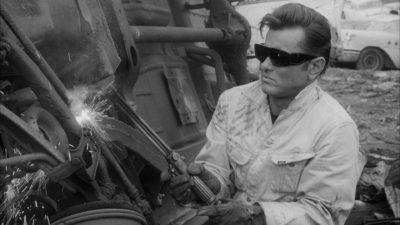
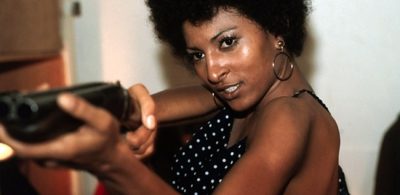
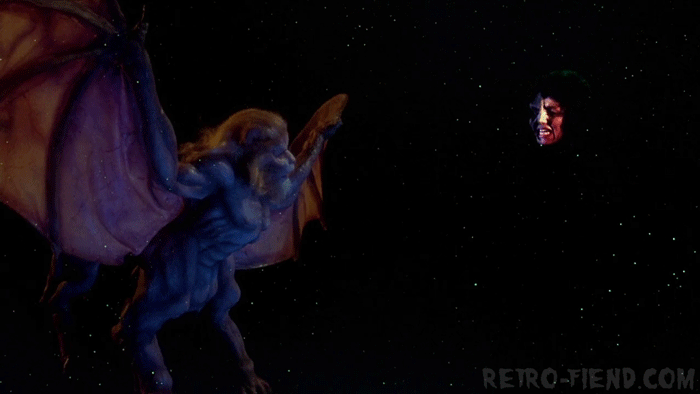
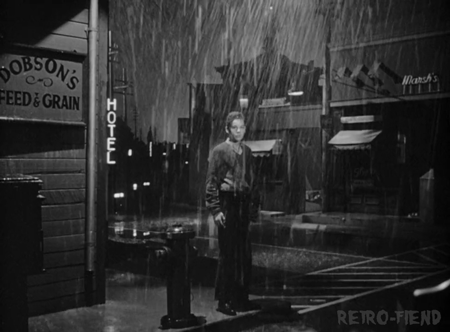

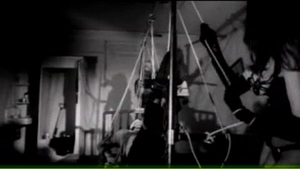
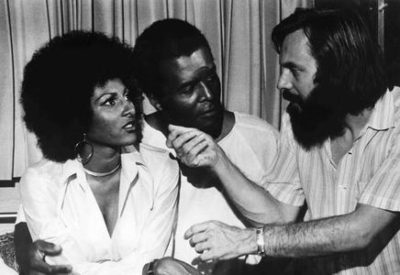
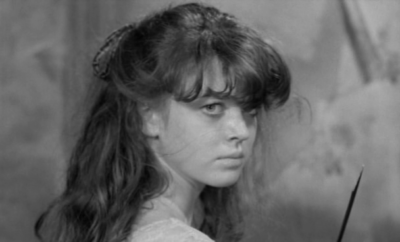

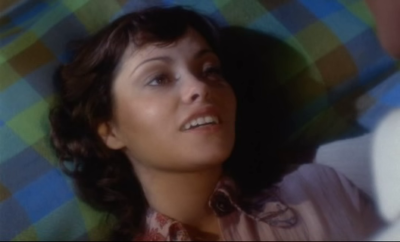
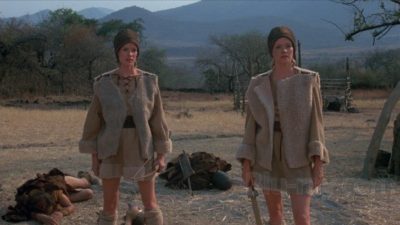
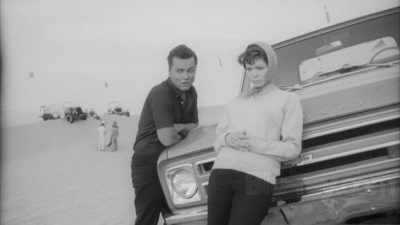
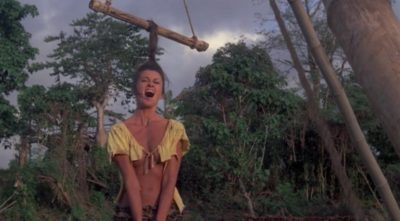
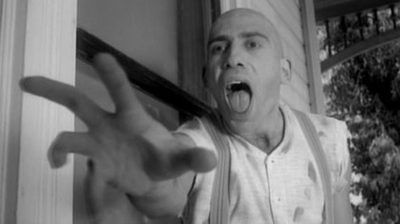
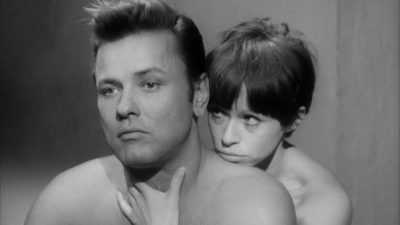
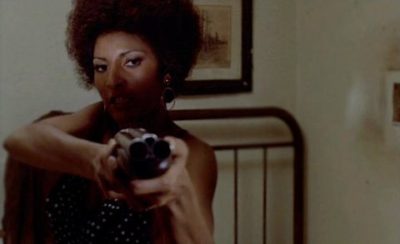

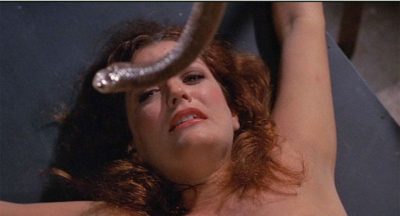
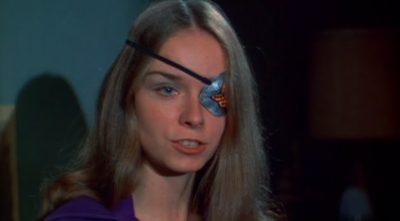

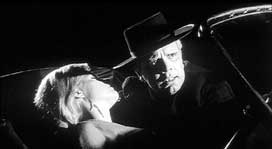

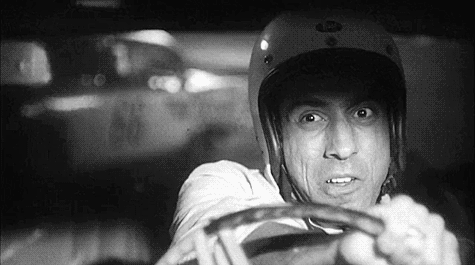

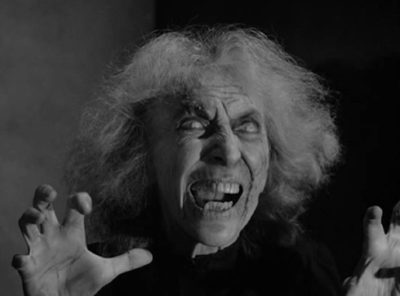
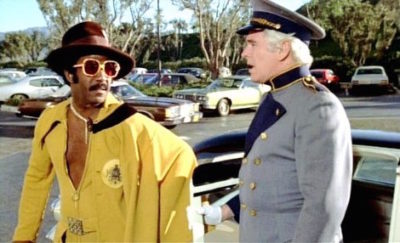
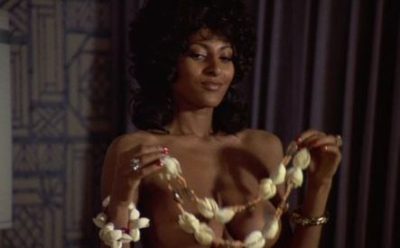
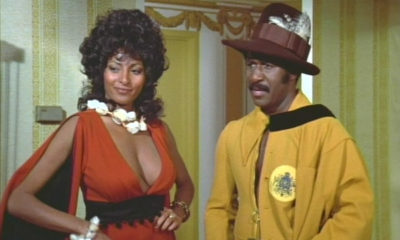
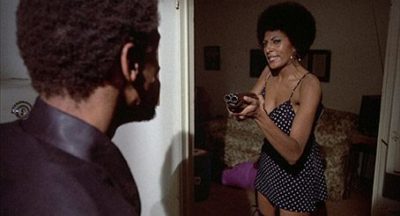
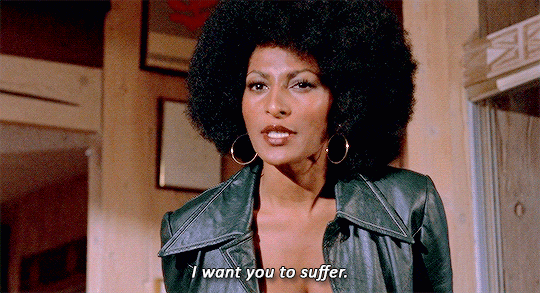
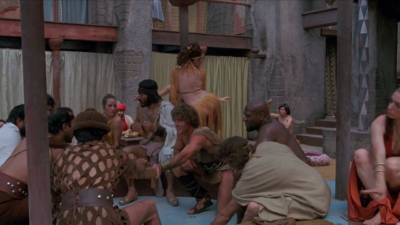

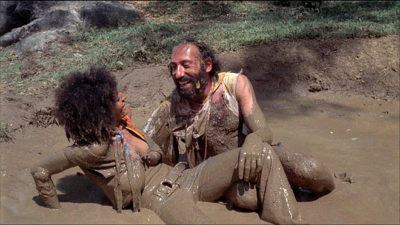
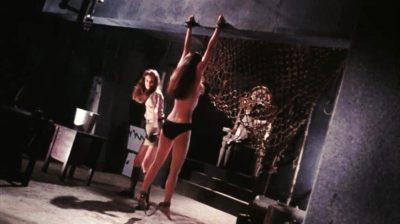
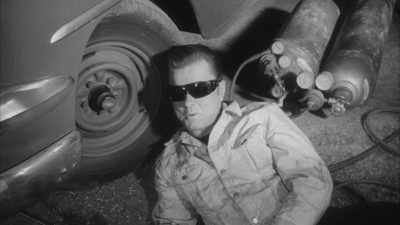

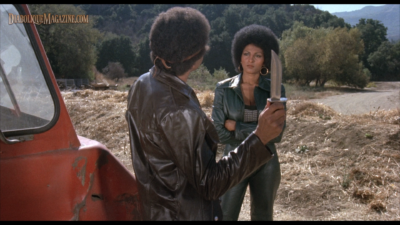
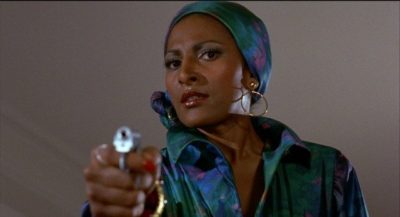
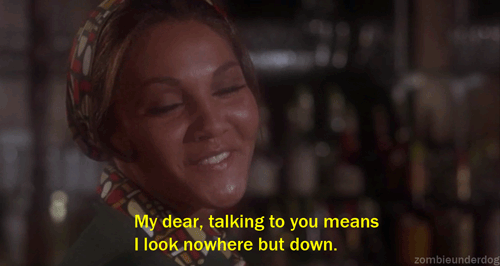





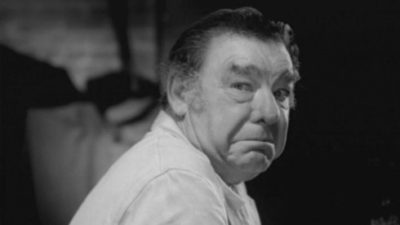





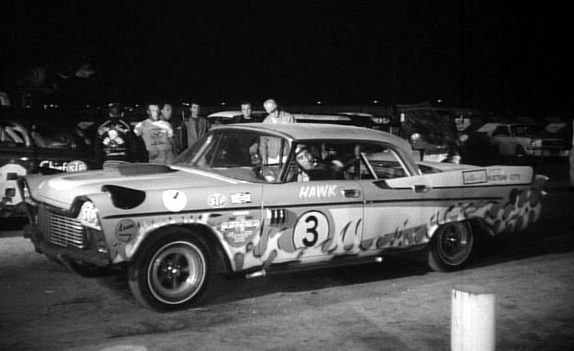

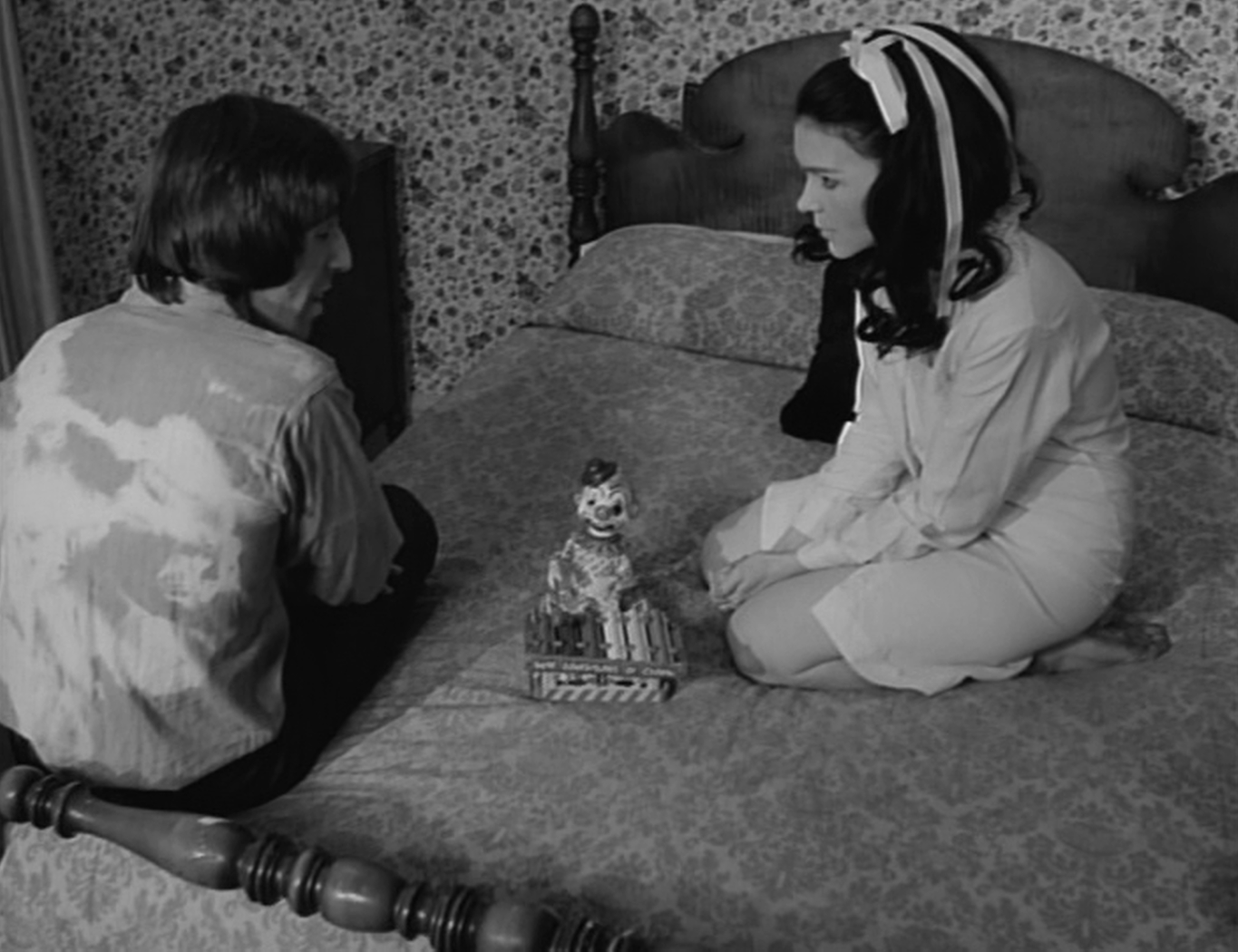
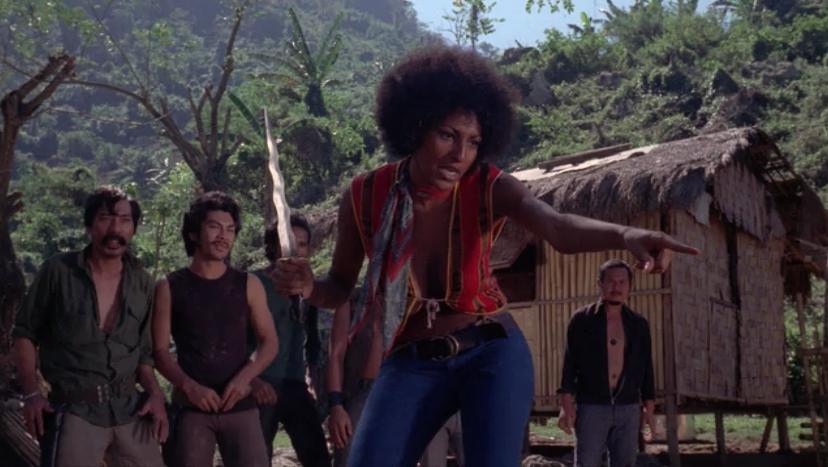

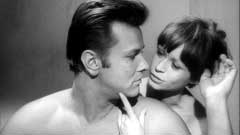

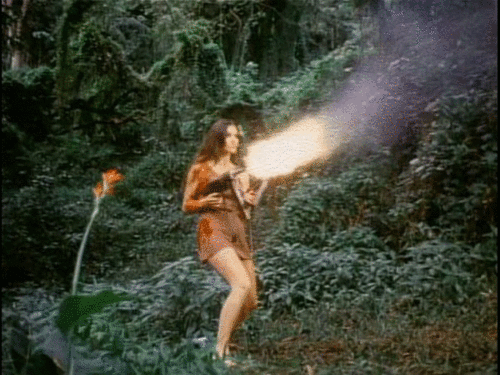
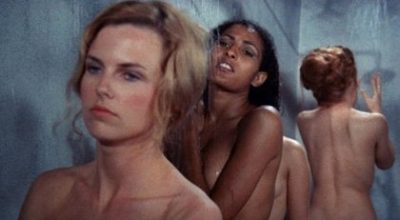
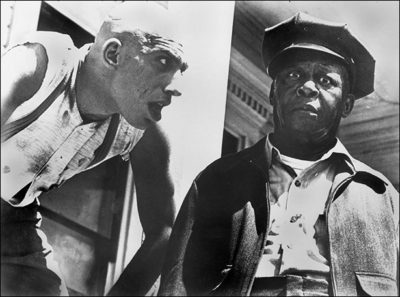
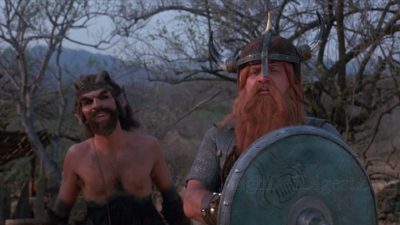
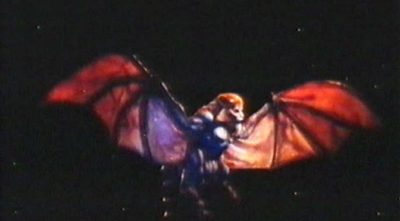
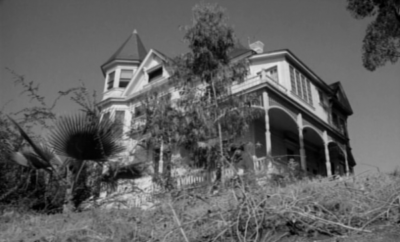
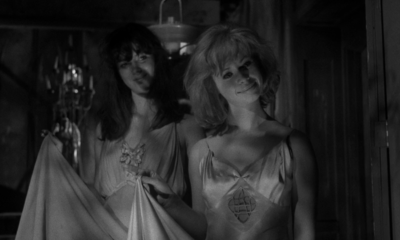
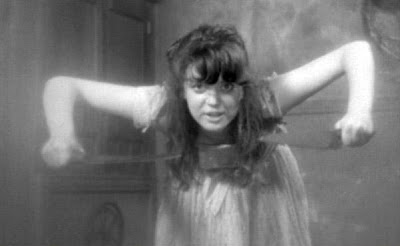
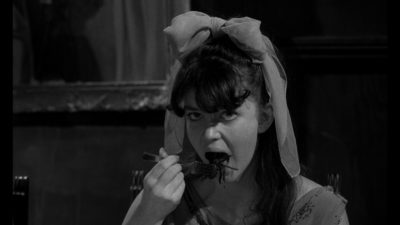

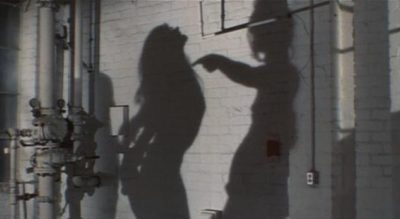
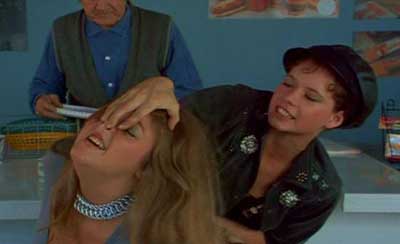
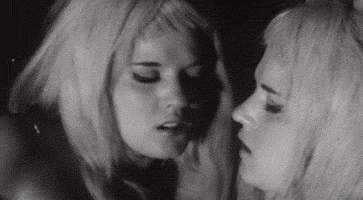

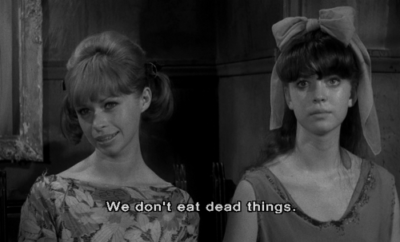
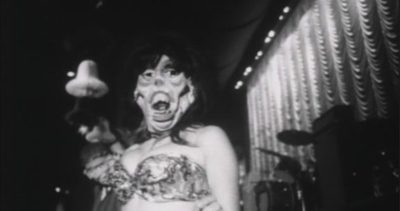


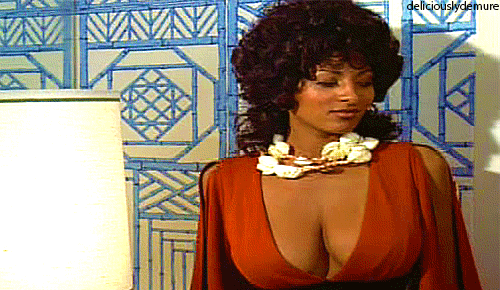
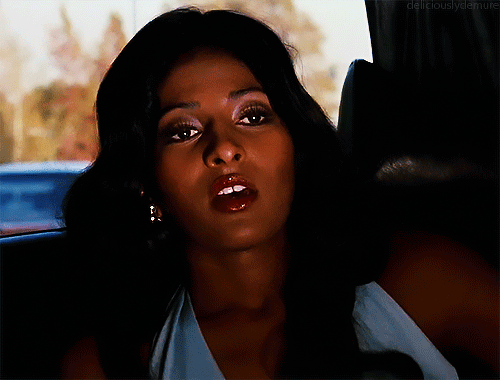
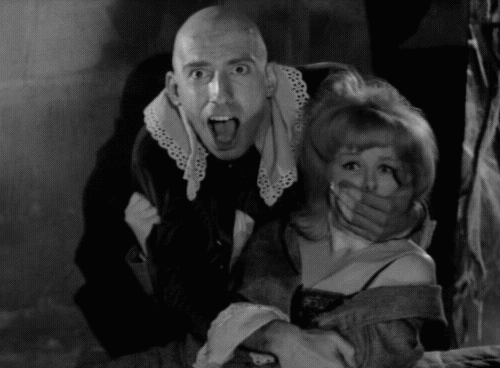
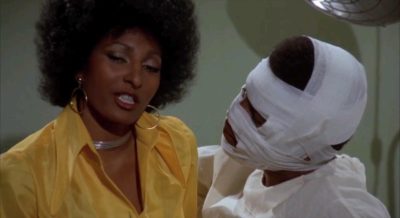
___
Further
Jack Hill @ IMDb
Spider Baby Online Shop – Official Spider Baby Merchandise
‘Switchblades and Suffrage – The Femsploitation Films of Jack Hill’
‘Filmmaker Jack Hill on becoming a blaxploitation cult hero’
‘JACK HILL: KING OF EXPLOITATION’
Video: Watch Jack Hill’s ‘Mondo Keyhole’ @ Fandor
Jack Hill @ mubi
Book: ‘Jack Hill: The Exploitation and Blaxploitation Master, Film by Film’
‘Videophiled Cult: ‘Spider Baby’ and the B-movie delights of Jack Hill’
Jack Hill @ Horror Cult Films
‘On My Shelf: Pit Stop and Spider Baby
‘Pam Grier: Interview with the Accidental Action Heroine’
‘An Interview With Sid Haig’
‘Jack Hill: An Interview’
Podcast: ‘Naked Lunch Radio #8 – Director Jack Hill special’
____
Jack Hill on …
Spider Baby
Coffy
Sorceress
Foxy Brown
Pit Stop
The Big Doll House
_____
Interview
from Film Monthly

Gary Schultz: I’m sitting here with Jack Hill the legendary cult film director considered to be the initiator of the women-in-prison genre of the seventies. As well, you helped to define the Blaxploitation genre and you discovered Pam Grier. But I guess at the center of it all you would be considered an independent filmmaker. Especially in the spirit of working on extremely low budgets with insanely short shooting schedules. Whew! That was a mouth full. How did you break into the film business?
Jack Hill: Well I went to UCLA to get my degree in music with the idea of learning to score films and that’s how I got into the cinema department. I had some experience with making films and editing them. I had some e
xperience with photography so I got into the cinema department and took a required writing course and basically I wanted to be a composer but the more I got into it the more my teachers got into it and encouraged me to go on. So I did a directing assignment that was a fifteen-minute film and then I did a student film which was a thirty-minute film called The Host. Students submitted scripts and each semester they would pick three that would be made into a twenty to thirty minute film. After that I got odd jobs writing, editing and doing photography. Then I got a job working for Roger Corman and started adding scenes to pictures that needed more running time and fixing things that didn’t quite work, shooting inserts and pick-ups. Various things.
GS: Not a bad way to start off.
JH: No, not all. Then I got a chance to do some more stuff. At about that time I met some people that wanted to finance a horror picture and they came across my script for Spider Baby and then I got to do it.
GS: That was your first feature directing?
JH: Yes.
GS: Many of your films have been said to define the so-called Blaxploitation genre? What were some of the difficulties or criticism you faced by working in this genre in the sixties and seventies especially coming off the climax of the civil rights movement?
JH: Well yeah, there weren’t that many difficulties…see it wasn’t called the Blaxploitation genre back then. They were just called black films. They had demonstrated that these pictures could make money and anytime that happens there’s people who want to hire people to do the work. The only comment that I can make about that whole genre is even though this was long after the civil rights movement there was still a lot of racism in the film industry. There weren’t many black people behind the camera and most of the black actors were just happy to be working because there were so few roles for them at that time. That’s why I’m very happy to have done Blaxploition films. It helped give black actors a chance to work, introduced black actors and black lifestyle into the mainstream film audience.
GS: How did audiences as opposed to critics receive your films back in the seventies?
JH: Oh they were both, Coffy and Foxy Brown major hits. Although often critics wouldn’t even go to see them. Critics just put it down; it’s a black movie. That’s another bit of racism. For example one reviewer referred to a role Pam Grier played in one of my films as being an unsympathetic black chick. Can you imagine somebody saying unsympathetic Jewish chick? I mean it was just an example of racism that people weren’t aware of. Actually it was unsympathetic black tart she was called. I mean nobody would say anything like that today.
GS: Out of all the many things I’ve read about you what always impresses me the most is how fast you shoot your films. I read that Spider Baby was shot in like twelve days. Foxy Brown was shot in seventeen days, one day ahead of schedule. Is there a method to this madness? Are you working with the same crew a lot?
JH: I never worked with the same crew twice actually. I never had that choice. Planning, Just careful planning. We didn’t run big overtime days like people normally do. We would run a ten to twelve-hour schedule. We would shoot very, very tight. With pictures like Foxy Brown I didn’t have a choice of an editor. Back then producers hated directors and they thought directors weren’t important. So I would shoot everything very tight and in way so that it could only be cut the way I wanted them to cut it. We had very little choices.
GS: What was it like starting your career off working with Francis Ford Coppola and Roger Corman?
JH: It was exciting. It was fun. There are always things going on when you’re shooting half dozen pictures a year. Roger would say, let’s make a movie about X, Y, Z and it would be in the theatre in four months. Roger was very, very good at getting the maximum out of very little means, which is something I learned from him. He was very good at making things look bigger than they really were and look like they had more to them.
GS: Filmmaking is cheating.
JH: Oh yeah definitely.
GS: You’re known as the man who discovered Pam Grier. She was in The Big Doll House and then you made Coffy and Foxy Brown. What did you see in Pam that made you realize her potential for being great in these films?
JH: She had what you really look for, authority and presence. She just had a natural stability to carry off a role. She stands out. I saw enough in her that I figured I would take a chance. It paid off.
GS: How has the positive endorsement of Quentin Tarantino affected your career?
JH: Well it’s been very helpful. Quentin is a very well known brand name and having his support has been very good. Over the last few years I’ve been writing new scripts doing the best work I’ve ever done. I’m not going back to what I used to do. That’s what got me out of the business in the first place. I didn’t want to make those kinds of pictures anymore and I was getting stereotyped. When you do something that is a success you are stereotyped into doing just that. People think that’s all you do.
GS: Cult movie fans although smaller audiences than the mainstream are so die hard and personal. Would you say that being revered as a cult director has helped or hurt the longevity of your career?
JH: Well for many years I didn’t have a career. Nobody knew my films and they were forgotten. Thanks to home video they have found an audience again. It’s always fascinating to see them find a new generation of audiences.
GS: I got to meet Sid Haig last August at the Chicago Comic Con. I was working with Artisan’s promotion department on their stink bomb of a movie House of the Dead doing zombie make up. On my lunch I got to meet Sid who was doing promo for the House of a 1000 Corpses. So we were in two different houses. Man, he was the most gentle, polite guy. I couldn’t believe he was the same guy playing all these degenerate characters all these years. Sid has appeared in nearly all of your films. How did you meet Sid and how had he found his way into so many of your pictures? Aside from the fact he kicks ass.
JH: Sid was in my student film The Host. A teacher of mine named Dorothy at the Pasadena Playhouse knew him. Sid was actually playing Othello.
GS: Sid playing Othello? I wonder if Rob Zombie knows about this?
JH: Anyway she called me up and said hey he’s really good. I met with Sid and I’ve been working with him ever since. Really I write parts for him.
GS: Are you guys still friends now?
JH: Oh yes.
GS: After Switchblade Sisters you made one other film under a different name and then you stopped making films. I heard you went on to write a novel or something.
JH: Yeah, I started working on a novel that was very ambitious and the more I worked on it the more ambitious it became. It turned into something that would have become a trilogy. And then stuff came up and I had to put it on the shelf because opportunities to do films came up. I had some stories I wanted to do that would only work on film. But I’m going to get back to it.
GS: I have read that you are looking to get into romantic comedies and break away from the whole mold that created Jack Hill the filmmaker.
JH: Well yeah, I’ve been there, done that. I have a romantic comedy that has found financing in England. And I have another script a friend of mine did that I did a rewrite on that’s been trying to find a home for twenty-five years and now it looks like it’s going to get m
ade.
GS: What are the titles of the features?
JH: The romantic comedy is called A Perfect Wife. And the other script is called Tangier, which is an action, adventure, comedy. It’s kind of a take on the Warner Brothers movies of the forties.
GS: Do you plan to direct these pictures?
JH: Well A Perfect Wife is a low budget film so I have no problem doing that. Tangier is probably going to be a twenty five million dollar picture. Unless I do another picture first nobody is going to hand me that kind of money. But I’ll be a co-producer on it.
GS: Any advice you can give to the up and coming generation of independent filmmakers?
JH: Pray for luck. My advice is forget it you don’t have a chance. If you can’t forget it and you won’t, then you have to give it one thousand percent. You have to make it your life. Spider Baby came together by shear luck. If it hadn’t been for that I don’t know if I would have done anything. If you keep playing you’ll come up with that number.
_______________
12 of Jack Hill’s 19 films
_____________
w/ Roger Corman, Monte Hellman, Jack Nicholson The Terror (1963)
‘Corman had the sketchiest outline of a story. I read it and begged him not to do it. He said “That’s alright Boris, I know what I’m going to do. I want you for two days on this.” I was in every shot, of course. Sometimes I was just walking through and then I would change my jacket and walk back. He nearly killed me on the last day. He had me in a tank of cold water for about two hours. After he got me in the can he suspended operations and went off and directed two or three operations to get the money, I suppose… [The sets] were so magnificent… As they were being pulled down around our ears, Roger was dashing around with me and a camera, two steps ahead of the wreckers. It was very funny.’ — Boris Karloff
the entirety
_____________
Blood Bath (1966)
‘Blood Bath is one of the most cockeyed creations ever to emerge from the Roger Corman camp. The nearest I can figure, Corman hired Jack Hill to make the movie. Then Hill was fired and replaced by Stephanie Rothman; she was charged to shoot new footage, but also to incorporate footage from a Yugoslavian vampire movie. Apparently footage was also taken from a movie called Portrait in Terror (which may be the same Yugoslavian movie? I’m not sure.) The theatrical cut of Blood Bath runs just about 62 minutes; to make matters more confusing, someone cut in about 10 more minutes of outtakes and other stuff to pad the TV version. William Campbell stars as a painter named Sordi. He works in a bell tower and lures beautiful women to his studio, kills them, covers them in wax, and paints their pictures. He also believes he is the reincarnation of his ancestor, and that the beautiful Dorean (Lori Saunders, credited as “Linda”) is also a reincarnation. He may also be a vampire, for some reason.’ — Combustible Celluloid
Trailer
the entirety
_____________
Mondo Keyhole (1966)
‘A deranged sociopath relishes his attacks on women, but are they only fantasy, real though they may seem? A debauched classic of the “roughie” genre, complete with S&M; fantasies. Jack Hill is the auteur of this production, so put down your demitasse coffee cup, fasten your seatbelt and expect the unexpected!’ — Fandor
Excerpt
Excerpt
_______________
Spider Baby or, The Maddest Story Ever Told (1967)
‘Jack Hill’s SPIDER BABY is a sweetly perverse 60s exploitation concoction pitched somewhere between THE ADDAMS FAMILY and THE TEXAS CHAINSAW MASSACRE, but made before the latter franchise existed. This is one of the ultimate cult films. Once seen, it’s never forgotten, and the legion of movies that were influenced by SPIDER BABY have sadly all ended up more well-known than the should-be-iconic original. It’s the type of movie that begs for a marquee Blu-ray release to give it the attention denied for far too damn long. Thankfully, that’s what Arrow does best, and now it’s time for horror fans to dedicate a few hours to adoring appreciation of the disc, followed by some well-warranted dancing in the streets. For those unfamiliar, Hill’s flick opens up with one of those post-PSYCHO B-movie prologues discussing an odd psychological disorder that will be delightfully exploited for the next 80-odd minutes. In this case it’s the “Merrye Syndrome,” a bizarre disorder that causes youngsters to regress into childish psychosis once they hit puberty. Conveniently, all the remaining Merrye Syndrome sufferers are limited to one family who share the syndrome’s name. Former family servant Bruno (Lon Chaney Jr.) now looks over the three Merrye siblings, two girls Elizabeth (Beverly Washburn) and Virginia (Jill Banner) – who like to engage in murderous games of “spider” (unlucky visitors to the family home are the bugs) – and Ralph (Sid Haig), a massive man-baby with a taste for house cat flesh. They’re a creepy lot, and in accordance with classic horror movie convention are unexpectedly visited by two lost family members (Carol Ohmart and Quinn Redeker) as well as a lawyer (Karl Schanzer) and his secretary (Mary Mitchel) who hope to claim the family home as their own. They unwisely decide to stay in the overnight and as expected, the family reunion doesn’t go well.’ — Fangoria
Trailer
the entirety
______________
Pit Stop (1969)
‘Pit Stop is an amazingly well-executed movie by the inventive Jack Hill, revealing the independent writer/director in one of his best moments, running hard on virtually all cylinders in this fascinating study of the inhumanity of winner-take-all competition, set against a backdrop of automotive icons from the trailer-trash side of the street: stock cars, wrecking yards, racetracks, custom cars, drag racing, dune buggies, oval track racing… and craziest of all, figure-8 track racing. Originally released as The Winner — an incredibly ironic title, given the film’s anti-heroic stance — the decision to rename it Pit Stop also appears misleading, as there isn’t one pit stop in any of the races in the entire movie. But then, pit stop also means a short rest, a chance to get recharged, get your bearings, and then get back into the race. For the lead character, Rick Bowman (played by Dick Davalos), the time of the movie is a pit stop for him, as he takes a little time off in the move from his prior career of drag racer to his future job of oval track stock car racer. Trouble is, this is a Pit Stop on the Highway to Hell.’ — Culture Court
Trailer
the entirety
_____________
The Big Doll House (1971)
‘I’ve been a huge fan of Director Jack Hill (Spider Baby) since I first saw Coffy (1973) 15 or so years ago. The Big Doll House was Jack’s first real big hit for Producer Roger Corman and this was the film that sparked off a resurgence of the Women In Prison Exploitation subgenre. The plots for most WIP films are relatively simple: A group of women are thrown in a foreign prison for different crimes (often for no solid reasons. The real thrill of these genre films werent so much the intricate storylines, but seeing all the ultra-horny sexy girls in the shower or watching them fight! The Big Doll House is full of Exploitation thrills including mudfights, food fights, S&M; torturings including snakes and much more. The explosive climax of the film goes into overdrive as the women plan a breakout and uncover who the mysterious person behind the S & M sessions really is. The film was shot in The Phillipines and was co-produced by Eddie Romero, who was a popular producer-director known for his Blood Island films which were made around the same time.’ — Quentin Tarantino
Trailer
Excerpt
Excerpt
_____________
The Big Bird Cage (1972)
‘In The Big Bird Cage, Pam Grier plays a woman named Blossom who, along with her boyfriend Django, knocks off a Filipino nightclub to finance a revolution (what the globals are revolting against we never find out), then breaks into a prison run by a sadistic warden where she frees the multi-ethnic female population in a spectacular, burn-it-all-to-hell escape. Grier’s indoctrination into the prison is memorable: on her first day in the outdoor mess tent, she tactfully asks her fellow inmates, “Which one of you dykes thinks she runs this place?” When one of them asks her who she is, she says, “My name is Blossom, but that don’t mean shit. All you have to know is that now I run this place. Any other questions?” A woman steps up and says, “Yeah. Where do you want to be buried…nigger?” Grier kicks her ass, then puts the period on the sentence: “And that’s Miss Nigger to you. Okay?” If this is up your proverbial alley then rest assured that the remainder of the film delivers on the same level. Critics have called this Roger Corman production a feminist movie, but it’s the kind of “feminist” movie where all the actresses wear cutoff hiphuggers and wet midriff shirts (when they’re not cavorting in the group shower). From the distance of twenty five years it’s also strange to look at what was considered correct in 1972: racism is bad, but faggot jokes are okay (the guards are all giggling sissies and would rather French kiss a cobra than mess with any of the inmates). Along with Grier and the lovely Anita Ford, The Big Bird Cage features another junkhead performance by long-suffering blaxploitation veteran Carol Speed and a wild turn by the great Sid Haig as the hippie adventurer Django.’ — George Pelecanos
Trailer
Q&A: Pam Grier, “The Big Bird Cage”
_______________
Coffy (1973)
‘Good as Bird Cage is, it is in 1973’s Coffy where the Hill/Grier collaboration begins to hit its stride. Pam Grier stars in the title role of a woman seeking revenge on the drug dealers who got her little sister hooked on H. As the Roy “Ubiquity” Ayers soundtrack kicks in (“Coffy is the color of your skin/Coffy is the color of the world you live in….”) you know you’re about to witness a classic of 70’s blaxploitation. And the picture delivers like Karl Malone, coming at you with big fros and big bellbottoms, righteous violence, a pimp named King George (Robert DoQui), and several scenes of Grier in all her And-God-Created-Pam glory (watching this film gives a two-word answer to anyone who’s ever wondered why there’s a pause button on the house remote: Pam Grier). With Sid Haig as Omar.’ — George Pelecanos
Trailer
Excerpt
Excerpt
________________
Foxy Brown (1974)
‘In Foxy Brown, the heroine’s boyfriend is exposed as an undercover government agent, and when the mob shoots him, Foxy gets a job at the syndicate’s most exclusive escort agency to take them down from the inside. The story takes a while to get ramped up, and the pacing’s a little slack, but there’s a good reason why Foxy Brown is generally (if wrongly) considered the 1970s Pam Grier film. Writer-director Jack Hill’s success as a drive-in movie-maker was largely due to how well he could work sex and violence into pictures without it coming across as overly sleazy. It’s not irrelevant to the popularity of Foxy Brown that Foxy dresses up as an expensive prostitute, seduces no-good louses, and then abuses and/or shoots them. But as handled by Hill, the sensationalistic elements seem both natural and marginal. Grier as Foxy would be fun to watch even if she kept her clothes on and her claws in.’ — The Dissolve
Trailer
Montage
_______________
The Swinging Cheerleaders (1974)
‘While Hill himself calls The Swinging Cheerleaders “a Disney sex comedy,” I doubt if Disney could have pulled it off. On the cynical side, it’s a skillfully blended montage of target-group-driven scenes. Jack himself calls it a “tissue of cliches”. We see a lot of firm flesh from young, nubile actresses. We see college football games (intercut with real footage — one of Jack’s big moneysaving moves — it’s just that he edits it in so well). There’s a token college “radical” who does grass and cocaine and turns out to be the story’s misogynist. Adults are dopes and worse: the football coach, the president of the alumni association, and a black prof (who’s screwing one of the cheerleaders in his office after class) are involved in fixing the football games and betting on the spread. We come to realize members of the football team are sensitive boys after all, and we all receive our demographic thumbs-up at the climax, when the cheerleaders and players — in full uniform — attack and overcome some evil campus cops who have kidnapped and likkered up the star quarterback so they’ll lose the last game.’ — Culture Court
TV spots
Excerpt
_____________
Switchblade Sisters (1975)
‘Jack Hill’s drive-in cult classic Switchblade Sisters is really one of a kind in the world of Exploitation cinema. It was originally released under the title “The Jezebels” back in the 1970s, but after Writer-Director Quentin Tarantino bought the rights to the film and released it under his great Rolling Thunder Pictures label on DVD in the mid 90s, he changed it back to its original slashingly cool name. The film takes place in a sort of parallel universe. Hill actually envisioned the film to have a sort of a post Nixon era apocalyptic atmosphere. The acting in the film is really well done for a low budget drive in film and Jack Hill really does have a unique style as an Exploitation autuer. He also manages to combine elements from several Grindhouse subgenres into the film including: women in prison and blaxploitation films. If you go through his filmography you will pick up that Hill always injects his work with a certain level of intelligence and depth. They are definitely Grindhouse fare, but at the same time, much more. This is just one reason why I’m such a fan of his films. The cinematography was done by a young Tak Fujimoto, who later went on to do many great movies including Silence of The Lambs.’ — Quentin Tarantino
Trailer
Excerpt
Excerpt
______________
Sorceress (1982)
‘Jack Hill’s Sorceress is one of the greatest movies featuring twins confused about their gender ever made. The central conceit of this brilliant tale is that two girls, kidnapped from their sorcerer father as babies are raised as boys, despite the fact that they are really, really sexy blonde chicks with big knockers. Their father Traigon, returns from the dead in search of his virgin daughters because their blood will give him all the powers of the masters of the universe or something like that. The girls, (boys?), surrogate parents are killed Owen and Beru style, and before long they notice a Dwarf and a really creepy faun spying on them and their murdered parents. The weird airport cult wizard that rescued them as infants appears just in time to not save the day and walk into a bonfire. Thus begins the quest of Mira and Mara, to, I don’t know, keep Traigon and his evil endeavors at bay. This film really underscores the classic battle between the giant snake faced lady in the sky and the cool Lion-Dragon in the sky. The cheapest special effects are used to no avail in order to emphasize the lack of relevance that anything in this story has. Some boobs pop up. The faun bleats. The dwarf has a belly laugh as one twin loses her virginity to a curly headed doofus and the other, (who feels what her sister feels), lay on the ground and writhes around in orgasmic ecstasy.’ — Book of Dread
Trailer
Excerpts
*
p.s. Hey. ** David Ehrenstein, Hi. Uh, hm, yes, I think Brodkey was in a relationship with a famous female artist. Was it Sontag? I’ll have to look. ** Scunnard, Ah, very happy to have snuck some inspiration into you. Yeah, I’m good. You? ** _Black_Acrylic, I love what your new fiction thing is about and the title. Ultra-promising sounding! ** John Christopher, Hi, John. Oh, thanks. I’d never heard of her before I started hunting things for the post. And, yes, a score. Happy to see you. Come back any time, duh. ** Brendan, There are those who think veering to the lightweight and cheerful is the proper way to ‘help’ others during this nightmare, and there are those who think black on black is a better solution. Spooky: your world du jour. We’ve now left that era, at least for now, and you will too, and you’ll be amazed by how nice it feels to get a weird, wounded version of your old life back. Anyway, you’re being productive, and I am not especially, and so, in a strange way, you’re winning (or something). Need more coffee, B., you know the drill. I’m good. Hang tight. Love from me. ** Thomas Moronic, Thank you kindly, sir! honestly, I’d forgotten about the KRS post too, but there it was, looking plaintively at me from the archive like a pretty puppy in an adopt-a-dog venue. Great about the post! Sure, of course, whenever the time is right and you’re ready and all of that. My Tuesday was all right, not hugely eventful, but, yeah, it had a pleasant overall quality. Hope your Wednesday at least followed suit? ** Steve Erickson, Hi. thank you for the link to those conversations. Not much doubt that I’ll agree with what they’re saying. I just personally thought, based on my memory of the film and its historical context, that ‘stomps on’ seemed rather violent and invested that aspect of the film with an intention to harm that I’m not sure I agree is there. We got an air-conditioner yesterday too. I look forward to your new song and the review. Everyone, Steve’s new song, of which he writes … ‘It took a very long time to get this to a state where I’m willing to post it publicly. I was aiming for a ’70s horror movie atmosphere once again, with a hint of satanism, and the early versions included samples of Latin chanting and backwards-masked vocals that I eventually decided were too corny’, … is called “Baphomet in the Monastery”, and it’s here. And he reviewed the Norwegian documentary THE PAINTER AND THE THIEF here. ** Misanthrope, I believed you until you wrote ‘No, really, I mean it’, ha ha. Yeah, the reason there was all that anticipation for the big novel was because his first book of stories was critically revered. After that, he got some the worst, meanest reviews I’ve ever read in my life. To wit, here’s the NYT on ‘The Runaway Soul’: ‘bogus philosophizing, paradoxical non-art, verbose, repetitive, overstuffed with adverbs, of questionable sense, tedious and just plain ugly.’ I mean, whoa. Apparently he was quite arrogant. I met him once, I think through Michael Silverblatt, who was an admirer, and I do have a distinct memory of him being awfully full of himself. ** Bill, Hi, B. Thanks. I also love the mechanical bird piece. I want it. I have had Magalhães’ paintings here before, but I think back on the murdered blog. Your bookstore experience was precisely mine/ours until last Monday. Now, bookstore-wise, it’s pretty normal. I think you’ll get back to that pretty damned soon from what I read. Its going well here. Since the reopening, the infection/death rate continues to drop, so I think we’ll get restaurants and cafes back soon. Granted, we don’t have pea-brained, shrieking paranoids bunching up and waving stupid signage here. ‘Who Slew Auntie Roo’, yeah, sweet. I just watched this French gay porn art film from 1980 called ‘Invitation to an Equation’ that Altered Innocence has restored and is releasing online. It’s quite good, very ‘New Wave’, very gradual and quiet with a kind of Bressonian sound design. Very interesting. And sexy even. ** Right. Today the blog invites the exploitation maestro Jack Hill’s stuff into the fold. There’s a bunch of fun up there if you’re into it. See you tomorrow.




 Now available in North America
Now available in North America 
Hey!
How are you???
How’s Paris’s recent change regarding this virus thing going for everybody?
My depression (I think) is ebbing and flowing as usual by now after over a month of not setting a foot outside the house in which I dwell.
Man, I know I should know much, much better; and the rest of the time I really do; but this time I couldn’t refrain. In a TARR’s ‘The Turin Horse’-(My #1 Favorite Film *OF ALL TIME* in a tie with *KUBRICK*’s ‘2001: A Space Odyssey’)related yt video there are actually some motherfucking MAGAts imbecilically, obviously erroneously, ignorantly and hatefully claiming both the Film and TARR are Anti-Semitic; and therefore “on their side”.
That just fucking enraged and ennerved me like you can’t imagine. I engaged in some kind of discussion with these individuals, but have now obviously just decided to ignore it all.
You’d think the comment section of a ‘The Turin Horse’-themed yt video would be a place where you don’t have to deal with motherfucking braindead, petty, hateful, ignorant-as-fuck, ethnocentric, solipsistic, racist motherfucking MAGAts…
I mean, when you got actual adults who are motherfucking MAGAts you just know you’re dealing with an absolutely and utterly lost cause and an unworthy one. *Sigh*.
Beware of MAGAts. They’re fucking *EVERYWHERE*.
Do many people recognize you in the streets in Paris? How about when you still used to live in this continent and the times you visit it? I ask because I just saw a video of *McCarthy* (*Bows*) being interviewed in Spain years ago when ‘The Counselor’ was made and he was saying how there had been “young people” outside with books asking him to sign them and wanting to take pictures and how that whole thing just surprised/puzzled him. Lol.
Take good care,
Good day, good luck,
Best,
a.
Hey!
How are you???
How’s Paris’s recent change regarding this virus thing going for everybody?
My depression (I think) is ebbing and flowing as usual by now after over a month of not setting a foot outside the house in which I dwell.
Man, I know I should know much, much better; and the rest of the time I really do; but this time I couldn’t refrain. In a TARR’s ‘The Turin Horse’-(My #1 Favorite Film *OF ALL TIME* in a tie with *KUBRICK*’s ‘2001: A Space Odyssey’)related yt video there are actually some motherfucking MAGAts imbecilically, obviously erroneously, ignorantly and hatefully claiming both the Film and TARR are Anti-Semitic; therefore “on their side”.
That just fucking enraged and enerved me like you just can’t imagine. I engaged in some kind of discussion with these individuals, but have now obviously just decided to ignore it all.
You’d think the comment section of a ‘The Turin Horse’-themed yt video would be a place where you don’t have to deal with motherfucking braindead, petty, hateful, ignorant-as-fuck, ethnocentric, solipsistic, racist motherfucking MAGAts…
I mean, when you got actual adults who are motherfucking MAGAts you just know you’re dealing with an absolutely and utterly lost cause and an unworthy one. *Sigh*.
Beware of MAGAts. They’re fucking *EVERYWHERE*. I’m 100% serious.
Do many people recognize you in the streets in Paris? How about when you still used to live in this continent and the times you visit it? I ask because I just saw a video of *McCarthy* (*Bows*) being interviewed in Spain years ago when ‘The Counselor’ was made and he was saying how there had been “young people” outside with books asking him to sign them and wanting to take pictures and how that whole thing just surprised/puzzled him. Lol.
Take good care,
Good day, good luck,
Best,
a.
Hey!
How are you???
How’s Paris’s recent change regarding this virus thing going for everybody?
My depression (I think) is ebbing and flowing as usual by now after over a month of not setting a foot outside the house in which I dwell.
Man, I know I should know much, much better; and the rest of the time I really do; but this time I couldn’t refrain. In a TARR’s ‘The Turin Horse’-(My #1 Favorite Film *OF ALL TIME* in a tie with *KUBRICK*’s ‘2001: A Space Odyssey’)related yt video there are actually some motherfucking MAGAts imbecilically, obviously erroneously, ignorantly and hatefully claiming both the Film and TARR are Anti-Semitic; therefore “on their side”.
That just fucking enraged and enerved me like you just can’t imagine. I engaged in some kind of discussion with these individuals, but have now obviously just decided to ignore it all.
You’d think the comment section of a ‘The Turin Horse’-themed yt video would be a place where you don’t have to deal with motherfucking braindead, petty, hateful, insular, myopic, ignorant-as-fuck, ethnocentric, solipsistic, racist motherfucking MAGAts…
I mean, when you got actual adults who are motherfucking MAGAts you just know you’re dealing with an absolutely and utterly lost cause and an unworthy one. *Sigh*.
Beware of MAGAts. They’re fucking *EVERYWHERE*. I’m 100% serious.
Do many people recognize you in the streets in Paris? How about when you still used to live in this continent and the times you visit it? I ask because I just saw a video of *McCarthy* (*Bows*) being interviewed in Spain years ago when ‘The Counselor’ was made and he was saying how there had been “young people” outside with books asking him to sign them and wanting to take pictures and how that whole thing just surprised/puzzled him. Lol.
Take good care,
Good day, good luck,
Best,
a.
Jack Hill is a kind of hipper, cooler Edgar G. Ulmer ad his films are highly recommended by yours truly. There’ nothing quite like “Spider Baby.” Pam Grier is a GODDESS on screen and a truly lovely person in real life. “Coffy” is terrific. Quentin Tarantino tired to make his own version of it with Pam Grier called “Jackie Brown” and it’s the only one of his movies I actually like.
I was sent a copy of “Equation to an Unknown” too. As gay porn goes its quite “arty” in ways that such films used to be back in the day, especially a now-legendary one about a gay Jesus called “Him.” It’s tons of one-handed fun.
Funny, I’ve seen Spiderbaby, but never connected it with Hill’s blaxploitation movies. (This was in the pre-imdb days, of course.)
Hope you’re enjoying the air conditioner, Dennis. (Isn’t it early in the season?) Does reopening mean your game controller has also arrived?
“Equation” looks umm totally my thing. I see it’s on Vimeo, yay.
Steve, “Baphomet” is great fun, thanks!
Bill
hey dennis. yes i am batman, er nitepain. Its stolen from a south park episode where the ghost of edgar allan poe is summoned and he agrees to help only if they “call me by my goth name, Nightpain”. I always thought it was hilarious. Pandemic world seems pretty goth, masks, avoiding ppl. Do you think we will have a resurgence of goth aesthetic? one can only hope.
ps: got my books delivered today, excited to have something new to read.
take care- ian27
COFFY is a great movie!
Dennis, Silly question: I wonder if his underratedness has to do at all with his rather plain name, Jack Hill?
I was going to ask you if you’d met Brodkey.
Hmm, that NYT review for “Runaway Souls” could describe “Profane Friendship” too, hahaha. There is a verbosity and overwroughtness to both his storytelling and his prose that really drag the narrative down. Or just the scenes down. Or just the whole thing. He beats an idea to death and then exhumes it and beats it to death again.
But…there are times where it gets quite enjoyable, and those times are usually at the beginning of the introduction to something…and then he beats it to death.
Also, he’s one of these writers where things just can’t be. Every happiness has to have an equal amount of sadness and vice versa. Everything excites AND scares, uplifts AND brings down, etc. Very little showing, mostly telling.
But there are parts that are good that I like: before he gets bogged down in something. I’m kind of just reading through to those parts, haha.
I would say the arrogance kind of shows through: he just knows this is some great shit he’s writing!
Btw, haven’t had my hair cut since the very beginning of March. Almost 3 months. Big ol’ curly, bushy mop on top of my head now. I’m tempted to cut it myself, as I used to for years. Hmm…